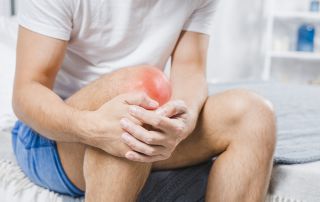Getting Moving Again
Total joint replacement patients are encouraged to get up and start moving around as soon as as possible after surgery
When you are medically stable, the physical therapist will recommend certain exercises for the affected joint. Physical therapy is a key part of recovery. To ease the discomfort the activity will initially cause, pain medication is recommended prior to therapy. In addition, the physical therapist will discuss plans for rehabilitation following hospital discharge. Depending on your limitations, an occupational therapist may provide instruction on how to use certain devices that assist in performing daily activities, such as putting on socks, reaching for household items, and bathing. A case manager will discuss plans for your return home and will ensure that you have all the necessary help to support a successful recovery.
Life After Total Joint Replacement
The vast majority of individuals who have joint replacement surgery experience a dramatic reduction in joint pain and a significant improvement in their ability to participate in the activities of daily living. However, joint replacement surgery will not allow you to do more than you could before joint problems developed. Your doctor will recommend the most appropriate level of activity following joint replacement surgery.
In the weeks following total joint replacement, certain limitations are placed on every patient’s activities. Using a cane or walker may be necessary for several weeks. Kneeling, bending, and jumping will likely be forbidden for the first month. It may be six weeks before driving is permitted. Your orthopaedic surgeon and physical therapist will provide specific recommendations.
When fully recovered, most patients can return to work, although some types of work — such as construction work, certain types of carpentry, and occupations that involve repeated or high climbing — may not be advisable for individuals with a joint replacement. Also, athletic activities that place excessive stress on the joint replacement, such as skiing, basketball, baseball, contact sports, distance running, and frequent jumping, should be avoided.
After joint replacement, a good rule of thumb is that acceptable physical activities should:
- Not cause pain, including pain felt later
- Not jar the joint, as happens with running or jumping
- Not place the joint in the extremes of its range of motion
- Be pleasurable
Talk to Your Doctor
Don’t let joint pain slow you down. If you have not experienced adequate results with medication and other conservative treatments, total joint replacement may provide the pain relief you long for — and the resulting return to your favorite activities.
Write down a list of questions about your condition, your concerns, and the ways that total joint replacement might benefit you. Then make an appointment to talk to your doctor — and make note of his or her answers and recommendations.
Remember, even if your doctor determines that joint replacement is a good medical option for you, it is still up to you to make the final decision.



